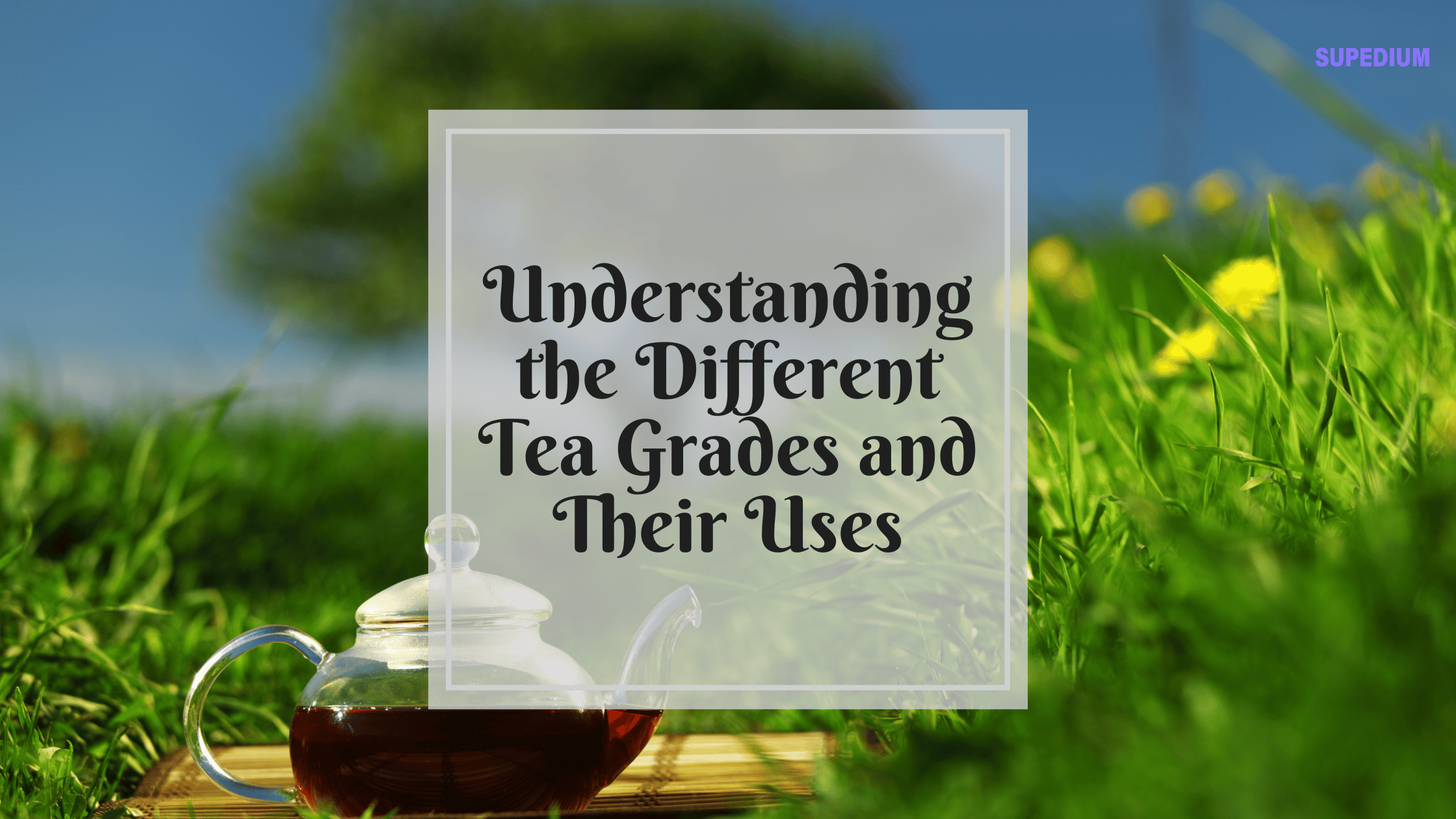Table of Contents
![]()
Tea is one of the most popular beverages worldwide, cherished for its diverse flavors, aromas, and health benefits. However, the tea market can be overwhelming, especially when it comes to understanding tea grades. This article will guide you through the intricacies of tea grading, explaining the various types, factors influencing grades, and how to choose the right tea for your palate.
What is Tea Grading?
Tea grading is the process of categorizing tea based on its quality, appearance, and flavor profile. The origins of tea grading date back to the early days of tea trade, where merchants established systems to differentiate between high-quality and low-quality teas. The primary purpose of grading is to inform consumers about the tea’s quality and help them make informed purchasing decisions.
Understanding tea grades is essential because the grade can significantly affect your tea-drinking experience. Higher grades often correlate with more nuanced flavors and aromas, while lower grades may have simpler, more straightforward tastes.
Common Grading Systems
Different countries employ various grading systems. For instance, India and Sri Lanka often use the Orthodox grading system, while China has its own unique classifications. Regardless of the system, most focus on the size, shape, and appearance of the tea leaves.
Types of Tea Grades
Black Tea Grades
Black tea is the most widely consumed type of tea globally, and its grading is crucial for quality assessment.
Whole Leaf Grades
- OP (Orange Pekoe): A high-quality black tea made from young, unbroken leaves. It is typically well-formed and offers a delicate flavor.
- FOP (Flowery Orange Pekoe): A slightly higher grade than OP, FOP includes tips of the leaves, providing a more fragrant aroma and complex flavor profile.
Broken Leaf Grades
- BOP (Broken Orange Pekoe): Made from broken leaves, BOP has a robust flavor and brews quickly, making it ideal for bagged teas.
- GBOP (Golden Broken Orange Pekoe): A premium grade featuring golden tips, resulting in a richer taste.
Dust Grades
- PD (Pekoe Dust): Comprising small particles, this grade is often found in tea bags and brews rapidly, making it convenient for everyday consumption.
- D (Dust): The lowest grade, often used in mass-market tea bags, has a straightforward flavor and lacks complexity.
Green Tea Grades
Green tea is known for its fresh, vegetal flavors and health benefits. Grading varies significantly among different styles.
Whole Leaf Grades
- Gyokuro: A premium Japanese green tea with a sweet, umami flavor, made from shaded leaves.
- Sencha: The most popular green tea in Japan, offering a balanced taste with grassy notes.
Broken Leaf Grades
- Fukamushi Sencha: A deep-steamed green tea that produces a rich flavor and dark color, ideal for those who enjoy a stronger taste.
Powdered Grades
- Matcha: A finely ground powder made from shade-grown tea leaves, prized for its vibrant green color and health benefits. It is used in traditional tea ceremonies and culinary applications.
Oolong Tea Grades
Oolong tea falls between green and black tea, with a wide range of flavors depending on the processing.
Whole Leaf Grades
- Tieguanyin: Known as Iron Goddess of Mercy, this high-quality oolong tea is fragrant with floral notes and a smooth finish.
- Da Hong Pao: A famous Chinese oolong with a rich, complex flavor profile, often reserved for special occasions.
Broken Leaf Grades
- Oolong grades can also include broken leaves, which tend to brew faster and are more accessible for everyday use.
White Tea Grades
White tea is the least processed tea, known for its delicate flavor and high antioxidant content.
Whole Leaf Grades
- Silver Needle: Made from the young buds of the tea plant, this premium white tea offers a sweet, light flavor.
- White Peony: Slightly more robust than Silver Needle, it includes both buds and leaves for a balanced taste.
Herbal Tea Grades
While not technically tea, herbal infusions are often graded based on quality and sourcing.
- Quality Indicators: Look for whole herbs, vibrant colors, and strong aromas. Grading is less formal, so focus on sourcing from reputable brands.
Factors Influencing Tea Grades
Several factors impact tea grading, including:
Leaf Appearance
The size, shape, and color of the tea leaves play a critical role in grading. Whole leaves are generally preferred for higher grades, while broken or dust grades indicate lower quality.
Aroma and Flavor
The aroma and flavor profile, shaped by processing methods and regional characteristics, are vital indicators of tea quality. High-quality teas often exhibit more complex flavors.
Harvesting Techniques
Tea harvested by hand is generally considered superior to machine-harvested tea, as it allows for selective picking of the best leaves.
Seasonal Variations
Tea quality can also fluctuate with the seasons. Spring teas are often more prized due to their freshness and unique flavors.
How to Choose the Right Tea Grade
Choosing the right tea grade can enhance your tea-drinking experience. Here are some tips:
Personal Taste Preferences
Start by exploring different grades to determine your preferences. Some may prefer robust, strong flavors, while others might enjoy delicate, floral notes.
Occasion and Use
Consider the occasion—special events may call for higher-grade teas, while everyday consumption can be satisfied with more accessible options.
Brewing Methods and Equipment
Different grades may require specific brewing methods. Whole leaf teas often need more space for the leaves to unfurl, while broken leaf teas can brew quickly in tea bags.
Pairing Tea Grades with Food
Certain tea grades complement different foods. For example, a delicate white tea pairs well with light dishes, while a robust black tea may suit heartier meals.
Conclusion
Understanding tea grades enhances your appreciation of this beloved beverage. From black to white, each grade offers a unique experience, shaped by various factors. By exploring different tea grades, you can discover new flavors and aromas, enriching your tea-drinking journey.
Share This





Be the first to comment